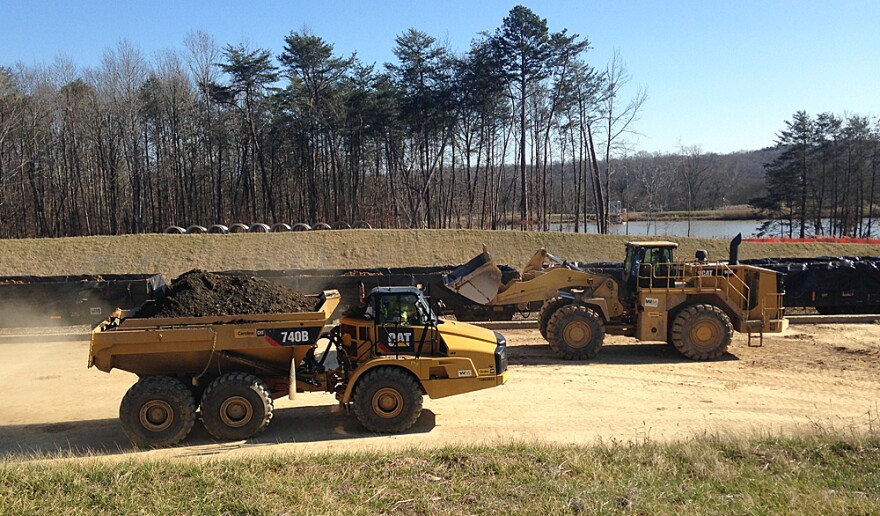February is a big month for Duke Energy to move coal ash out of its Dan River site.
With a new two-mile rail spur in place and machines moving material from large ÔÇťash stacksÔÇŁ ÔÇô soil-covered mounds of coal ash - Duke Energy expects to double its current rate of progress.
ÔÇťWeÔÇÖve moved already more than 66,000 tons of coal ash here and expect to exponentially increase that with our rail system now in place moving forward,ÔÇŁ says Jeff Brooks, a spokesman for Duke Energy.
About half of the three million tons of coal ash from this site will head by rail to a lined landfill in central Virginia. Much of what remains will be re-buried in a to-be-constructed lined landfill at Dan River.
Tuesday is the two-year anniversary of the Dan River coal ash spill. On that Super Bowl Sunday morning two years ago, a stormwater pipe under a coal ash basin broke, releasing 39,000 tons of coal ash into the river. That prompted state lawmakers to pass the Coal Ash Management Act in 2014.
Duke Energy says it prefers to move coal ash via rail because that method carries more, and because itÔÇÖs safer.
ÔÇťWhen itÔÇÖs transported on the rail cars it is completely lined in the rail car here at Dan River and covered, so that that material cannot leave,ÔÇŁ says Brooks. ÔÇťAnd itÔÇÖs separated from moisture while itÔÇÖs being transported.ÔÇŁ
Environmental groups ÔÇô like the Southern Environmental Law Center and various Riverkeepers ÔÇô have long sought to have the utility company move ash away from rivers and into lined landfills to protect groundwater.
In , SELC claims that coal ash moved in South Carolina led to a 99 percent reduction in arsenic groundwater contamination near coal-ash sites.
Two converted clay mines in Lee and Chatham County will also accept ash from other Duke EnergyÔÇÖs North Carolina sites. Residents near those locations .
Duke Energy has until the end of 2019 to move the ash at its four high-risk sites across the state.







